Keeping goats is always an adventure, and for some owners they are the most troubling and annoying livestock that they could have, while simultaneously being the most rewarding.
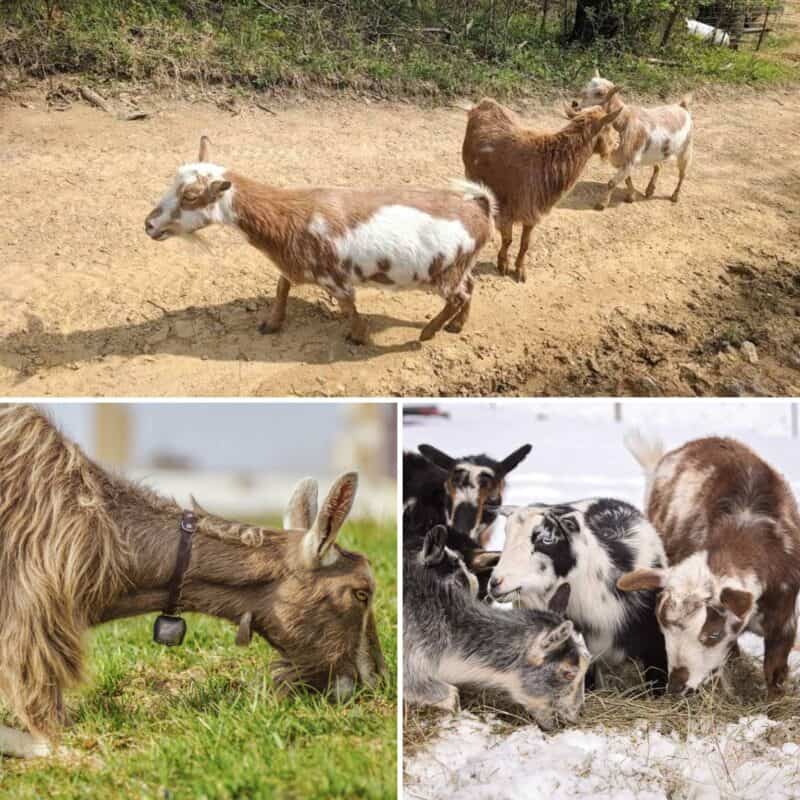
Goats can product milk and meat, and the milk is what makes it so worthwhile for most. Goat milk is very rich and highly nutritious, and best of all goats are a heck of a lot easier to house, feed, handle and milk than cows are.
If you’re looking for a dairy goat breed to keep yourself swimming in milk for any purpose, look no further than the breeds below.
1. Alpine
Milk Production Yearly: 2700lbs.
Alpine goats are a breed of domestic goats that are known for their truly excellent milk production.
This is a medium to large-sized breed, typically weighing between 120 and 170 pounds.
Alpines usually live between 8-12 years, and are characterized by their long, erect ears and their straight or slightly concave profile.
They come in a variety of colors like black, white, brown, and gray.
These goats are very active and agile, and they love to climb and explore. Alpines are also known for their typically friendly personality, and are a good choice for small farms or homesteads because they produce more milk per goat, consistently, than nearly any other breed.
Producing between 1-2 gallons of milk per day depending on their diet and genetics, their milk is rich in protein and average to low in butterfat which makes it suitable for cheese and yogurt making.
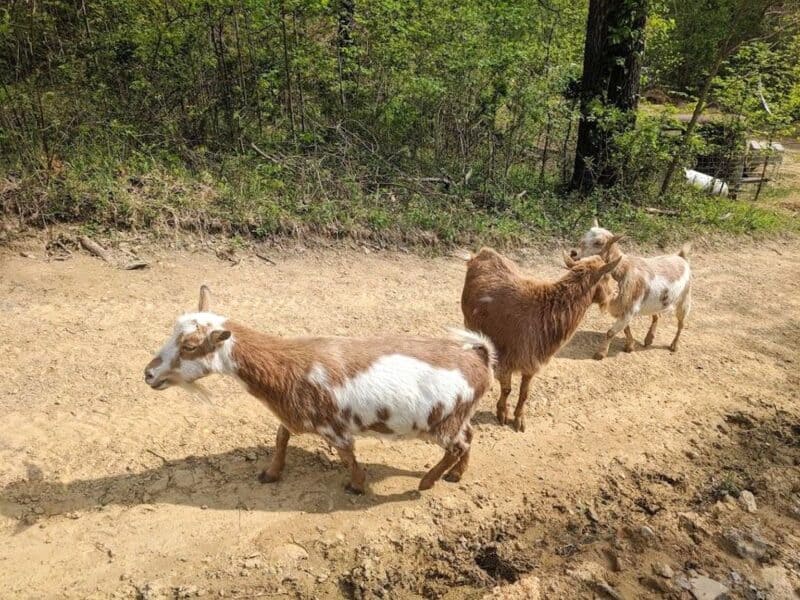
2. Nubian
Milk Production Yearly: 2,000lbs.
Nubian goats are a popular breed of domestic goats, originally from Africa. They are medium to large-sized animals, weighing between 130 and 175 pounds.
They have distinct long ears and a roman nose which adds to their unique appearance. Their coat comes in a range of colors including tan, black, and white.
These goats, like Alpines, are known for their friendly and gregarious personality which makes them easy to handle, especially for beginners.
However, they do tend to be “independent” and corralling them for milking can be a chore.
These goats are also rightly famous for their excellent dairy qualities, producing around 3-6 quarts of moderate-butterfat milk per day (with good genes and nutrition).
This makes them entirely suitable for producing dairy products such as cheese, yogurt, and butter.
However, they do need a higher protein diet than other dairy goats to maintain their milk production.
3. La Mancha
Milk Production Yearly: 2,300lbs.
La Manchas are dairy goats known for their small size but stellar milk production. They are one of the smaller of the high-production dairy goat breeds, weighing between 130 to 150 pounds.
Their most notable physical feature is their distinct earlessness, which is a genetic characteristic. That’s right: La Manchas just don’t have ears!
These goats are generally calm in nature, almost stoic, and though this makes them easy to handle they can be standoffish and stubborn, especially when stressed.
La Mancha goats are also somewhat adaptable to different climates and can tolerate warmer or colder climates.
However, they have extremely short, fine coats, and they will need extra protection in winter.
La Mancha goats are known for their excellent milk quality and high production which can range from 1 liter per day on the low end to 3 liters or more on the high side. For milk alone or a variety of the usual dairy products, La Manchas are tops.
La Mancha goats are yet another super choice for all dairy goat farmers, particularly those who want goats that are a snap to care for and can handle a little less room, while giving up nothing in the way of quality or quantity.
4. Sable
Milk Production Yearly: 2,200+lbs.
Sable goats are named for their usually dark brown or black coat, which often has a white undercoat.
One of the most beautiful and striking breeds around, and they are a medium-sized goat weighing between 120 and 140 pounds.
These goats are hardy, tough and highly adapted to cold thanks to their coarse, thick coats and stout build, but they are also decent in hotter areas since their dark skin helps protect them from skin cancer, a common issue for some goats and several dairy breeds in particular.
They are also independent and inquisitive, traits that make them good foragers. However, they can be difficult to handle for milking though they are typically friendly and amenable to people.
Sable goats are another big producer breed, with healthy, properly fed goats of exceptional lineage producing more than 2,350 pounds of milk per year.
They can maintain their milk production throughout the majority of the year, too, making them a great choice for consistent production even after other breeds quit.
Sable goats are a bold choice for keepers who want a goat with unique coat coloring, or anyone who wants a hardy breed that still produces tons of high quality milk with little fuss.
They are also ideal for anyone who wants goats that are happy to forage for their food at least some of the time.
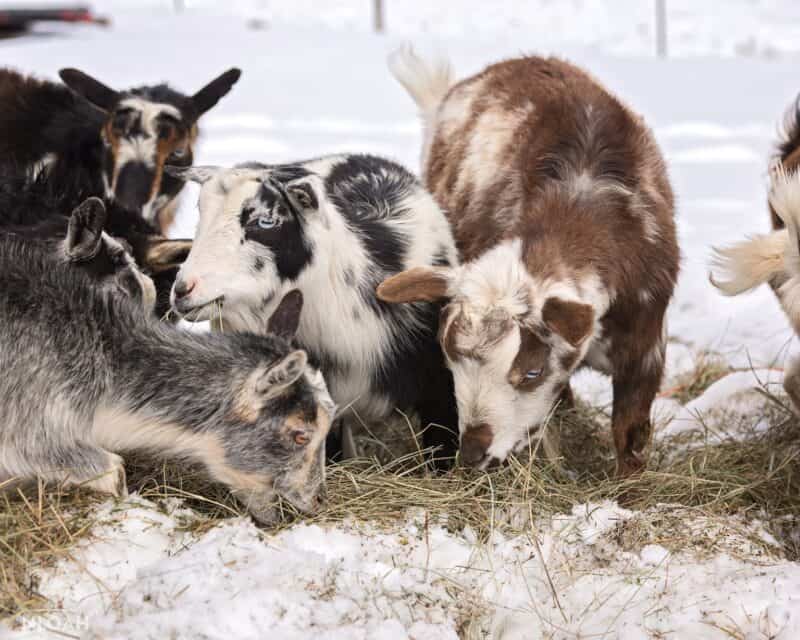
5. Nigerian Dwarf
Milk Production Yearly: 790lbs.
The smallest goat on our list, as the name suggests, but one of the mightiest milk producers by bodyweight ratio!
The Nigerian Dwarf is a miniature breed of goat, weighing between 40 and 55 pounds. They’re also one of the most colorful breeds around.
Their coats can be black, white, gray, brown or red with any number of patterns and variations therein!
Nigerians are incredibly friendly and sociable animals that love to show off their personalities, but more importantly they will really crank out the milk for such a tiny breed.
Though their yearly production is much lower than all of the other breeds on our list, they can produce up to three times as much milk per pound of body weight.
An excellent dairy goat of this breed will produce almost 20 times its body weight in milk each and every year!
What’s more, their milk is the richest of all dairy goats, topping out at an amazing 10% butterfat content.
Nigerian Dwarf goats are the perfect choice for anyone looking to maximize their milk production with sharply limiting space considerations and resources.
They can also be great pets and are a cinch to wrangle considering their tiny size. Don’t let that fool you: you’d be wise to consider these pint-sized dairy powerhouses!
6. Oberhasli
Milk Production Yearly: 1,900lbs.
Oberhasli goats are a breed that originally hails from Switzerland. They are medium-large goats, weighing between 120 and 150 pounds.
They are famous for their long, upright and gently curving horns and also for their distinctive color pattern, consisting of a reddish-brown coat with black markings on their face, legs, and back, a pattern called chamoisee.
These goats are friendly, but energetic and attentive in nature, and combined with their tight, short coats and striking colors they seem to be the very picture of vitality. They are my favorite breed, so perhaps I am a bit biased!
But more importantly, Oberhasli goats are one more breed known for their excellent milk production, and though it is not quite as high on average as some of the other superstar milkers on our list, it is nothing that any farmer would turn their nose up at.
They can produce between 2 and 4 liters of milk per day, and their milk is renowned for yogurt and ricotta cheese in some parts of the world.
As with most goats on this list, Oberhasli goats are a uniformly great choice for dairy farming: high milk production, long production cycle, friendly nature, and overall good health make them a winner.
They’re an especially good choice for keepers who want a beautiful, legacy breed that is sure to turn heads.
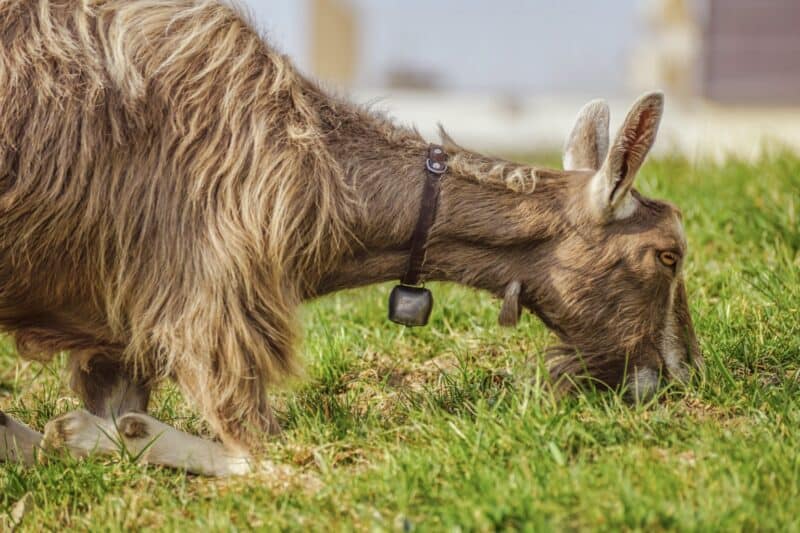
7. Toggenburg
Milk Production Yearly: 2,250lbs.
Another Swiss breed, and one with the distinction of being among the most popular dairy goats all around the world.
Toggenburgs are also medium-large goats, typically weighing in at around 140 to 165 pounds, and they have a tan or “mouse gray” coat with darker brown accents and tassels that makes them quite distinctive. This breed is notable for being naturally hornless at least some of the time.
Toggenburgs possess both great milk production and milk quality: they can give up to 4 liters of milk per day.
They’re also very consistent producers, easily capable of producing for years with the right diet.
Toggenburgs are curious, bold and noted to be fearless around other animals and even some predators, but they like people and make great pets, though they can be a handful to get into the milking station now and again.
If they have a shortcoming, it is that they do best in cooler regions. They can tolerate some warm weather, but they will not thrive in hotter climates.
8. Saanen
Milk Production Yearly: 2,700 Pounds
Yet another domestic Swiss breed, and yet another one renowned as a legendary dairy goat. Clearly the Swiss had something figured out when it came to breeding goats for milk!
The Saanen is the largest goat on this list, averaging from 150 to 240 pounds in weight and often reaching a truly impressive size when mature.
They are usually solid white or gray-white in color and have a straight profile with upright ears that point forward.
Saanen goats are docile and gentle, and this makes them generally easy to handle despite their great size, though you should know they can be a bit timid around strangers.
Their strength can also make life difficult if they are reluctant during milking time.
Saanens show an excellent production rate; up to 4 liters per day is common from good lines and good feeding, and they are able to produce for many years before needing a rest.
These goats have the distinction of being one of the most widely distributed dairy breeds on earth, and their milk is famous for its overall quality.
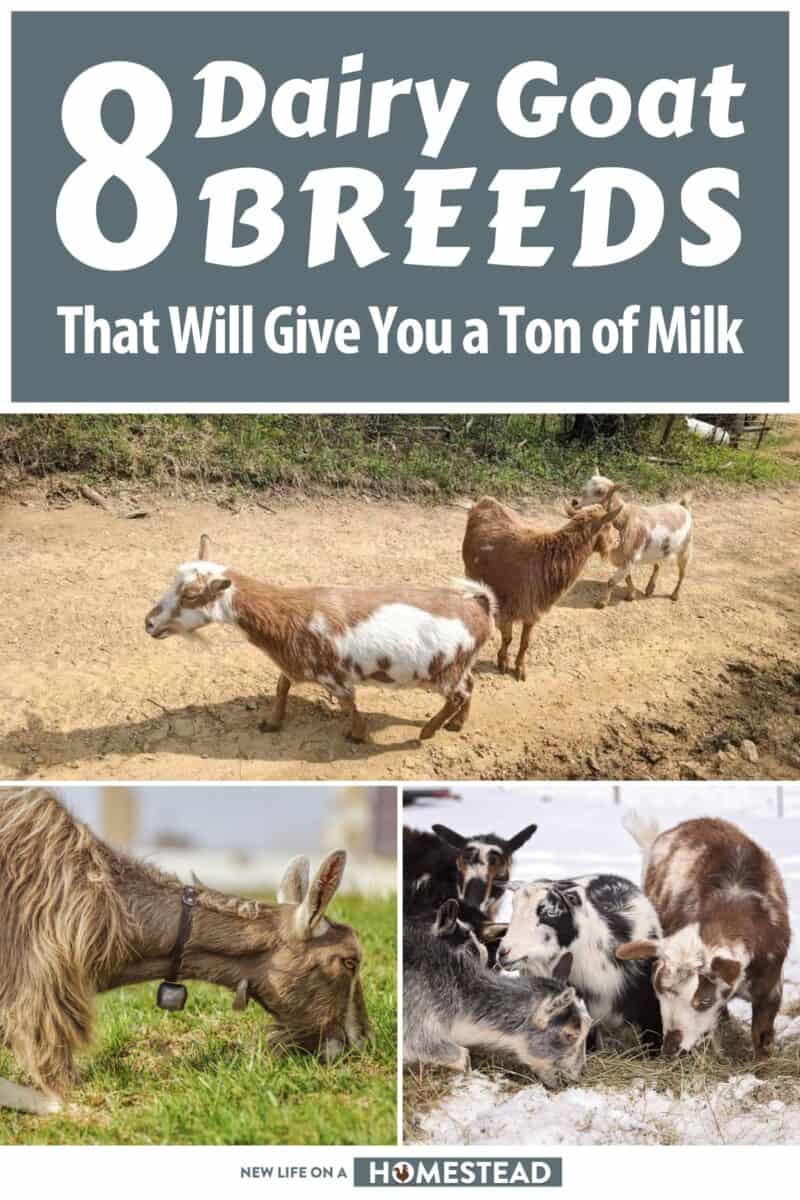
Tom has lived and worked on farms and homesteads from the Carolinas to Kentucky and beyond. He is passionate about helping people prepare for tough times by embracing lifestyles of self-sufficiency.
